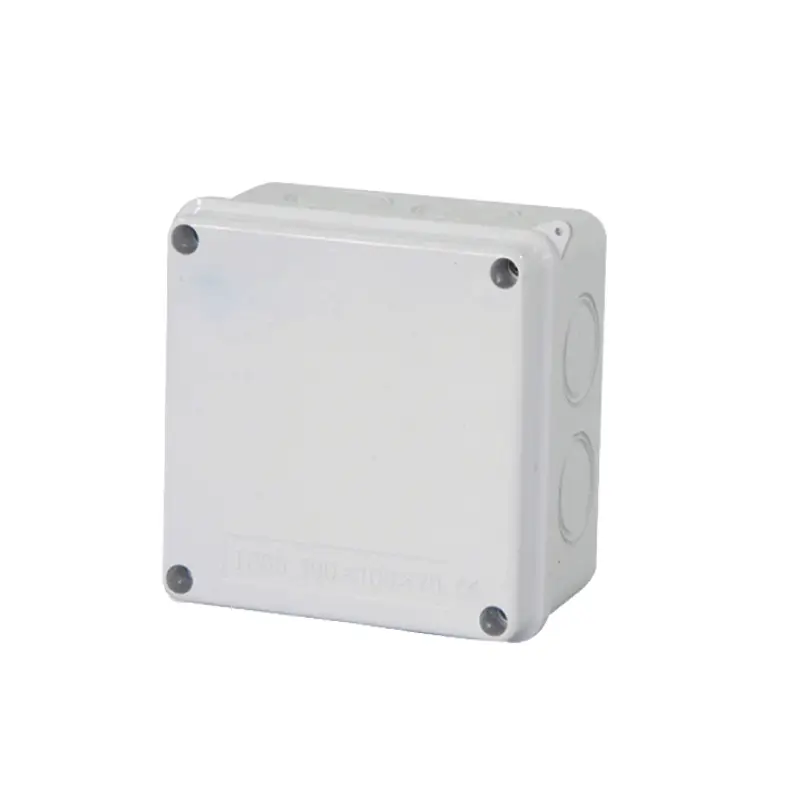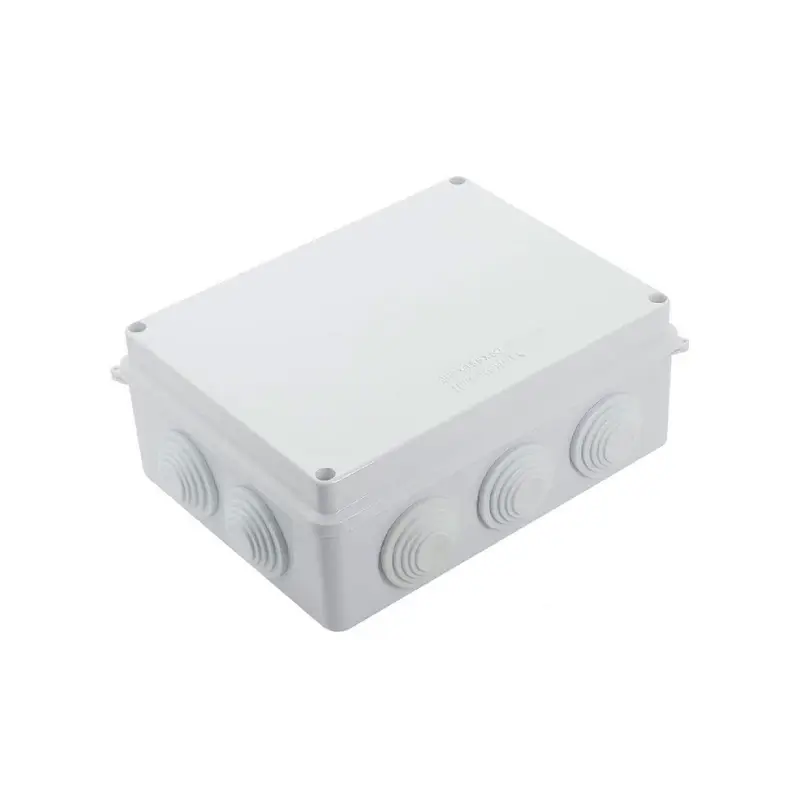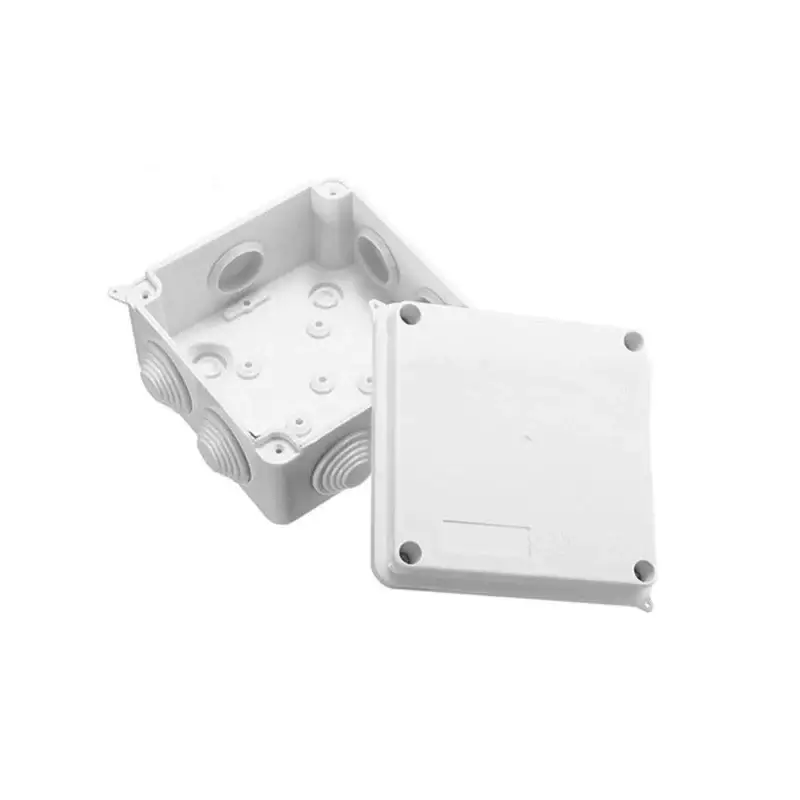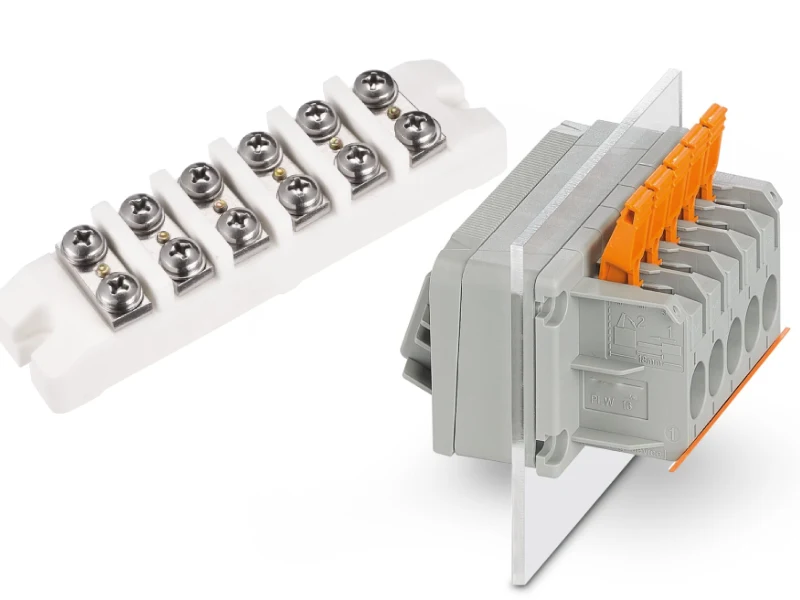In industrial and complex electrical systems, understanding the distinction between marshalling boxes and junction boxes is crucial for efficient and safe operations. While both serve as protective enclosures for wiring connections, their primary functions and applications differ significantly.
This blog post will delve into the key differences between marshalling boxes and junction boxes, exploring their specific roles in organizing, distributing, and protecting electrical signals and power within various industrial settings. We’ll highlight their unique characteristics and help clarify when to use each type of enclosure.
What is a Marshalling Box

A marshalling box is an electrical enclosure used primarily in industrial and automation systems to organize and terminate numerous control, instrumentation, and signal wires from field devices.
It acts as a central point for connecting these field wires to control system cables, often using terminal blocks to facilitate organized wiring, signal distribution, and ease of maintenance or troubleshooting. Marshalling boxes can also house components for signal conditioning, isolation, and safety barriers, making them a crucial interface between field equipment and the main control system.
What is a Junction Box



Marshalling Box vs Junction Box
Understanding the distinction between marshalling boxes and junction boxes is essential in electrical and instrumentation engineering. While both serve as enclosures for electrical connections, they cater to different complexities and scales of wiring.

Here’s a detailed comparison between marshalling box and junction box in the following:
Purpose and Complexity
Junction boxes are fundamental electrical components designed to enclose wire connections, providing safety and protection. They are used in various applications, from simple household wiring to more complex industrial setups, primarily to join or branch electrical circuits. Their function is relatively straightforward: to offer a secure housing for wire splices, preventing exposure to environmental factors and accidental contact.
Marshalling boxes, on the other hand, handle a higher volume and complexity of wiring, particularly in industrial automation and control systems. They act as an interface between field devices (like sensors and actuators) and control systems (like PLCs or DCS). Marshalling boxes not only enclose connections but also organize, distribute, and condition signals, facilitating efficient signal routing, testing, and maintenance of complex systems.
Application and Scale
Junction boxes find widespread use in general electrical applications, including residential, commercial, and light industrial settings. They are commonly used to connect lighting fixtures, outlets, and switches, and to extend or split electrical circuits. Their application is localized, dealing with a relatively small number of connections within a specific area or circuit.
Marshalling boxes are predominantly employed in large-scale industrial facilities such as power plants, refineries, and manufacturing plants. They manage the extensive network of signals from numerous field devices, consolidating them into a more manageable form for the control system. Their application is system-wide, handling a high density of input/output (I/O) signals and playing a critical role in the overall control and monitoring infrastructure.
Components and Features
Junction boxes typically contain simple components like wire connectors (wire nuts, terminal blocks) to join conductors. They are designed for basic wiring connections and protection, with a focus on safety and compliance with electrical codes. Features are usually limited to knockouts for cable entry and a cover to enclose the connections.
Marshalling boxes often include a wider array of components to manage and condition signals. These may include terminal blocks, fuses, surge protection devices, signal conditioners, and even small relays. They are designed for organized termination, signal distribution, and easy testing, often featuring clear labeling, cable glands, and hinged doors for access.
Signal Management
Junction boxes primarily deal with the physical connection of wires, ensuring electrical continuity and insulation. They do not typically alter or process the electrical signals passing through them. The focus is on maintaining the integrity of the electrical circuit.
Marshalling boxes are involved in more complex signal management. They may include signal conditioning circuitry to amplify, filter, or isolate signals, ensuring compatibility between field devices and the control system. They also play a role in organizing signals by type (analog, digital) and destination, simplifying troubleshooting and system maintenance.
Maintenance and Troubleshooting
Junction boxes, due to their simplicity, generally require minimal maintenance. Troubleshooting typically involves checking for loose connections or damaged wiring. Access is usually straightforward, with a removable cover.
Marshalling boxes, with their complex wiring and components, facilitate more structured maintenance and troubleshooting. Their design allows for easy identification and testing of individual signals, reducing downtime in industrial settings. Clear labeling, terminal block organization, and accessible layouts are crucial for efficient fault diagnosis and repair.
| Feature | Junction Box | Marshalling Box |
| Purpose/Complexity | Encloses basic wire connections; simple wiring. | Organizes complex wiring; interface between field devices and control systems. |
| Application/Scale | General electrical applications; localized connections. | Large-scale industrial facilities; system-wide signal management. |
| Components/Features | Wire connectors; basic protection. | Terminal blocks, fuses, signal conditioners; organized termination, signal distribution, testing features. |
| Signal Management | Physical connection of wires; maintains circuit integrity. | Signal conditioning, isolation, and organization. |
| Maintenance/Troubleshooting | Simple; checking connections. | Structured; facilitates signal identification and testing. |
Marshalling Cabinet vs Junction Box
While both marshalling cabinets and junction boxes organize electrical connections, they serve distinct roles within electrical systems. Junction boxes are more basic enclosures for wiring, whereas marshalling cabinets handle complex signal organization in industrial settings. Here’s a detailed comparison:
Purpose
Junction boxes are designed to enclose and protect electrical connections, primarily wire splices. They ensure electrical safety by preventing accidental contact with live wires and shielding connections from environmental factors. Junction boxes are a fundamental component in any electrical installation where wires need to be joined or branched.
Marshalling cabinets serve a more specialized purpose in industrial settings. They act as an interface between field devices (sensors, actuators) and control systems (PLCs, DCS). Their primary role is to organize, consolidate, and distribute a large number of signals, simplifying wiring and facilitating easier maintenance and troubleshooting of complex systems.
Scale and Complexity
Junction boxes typically handle a smaller number of connections within a localized area. They are used in simpler wiring scenarios, such as connecting lighting fixtures, outlets, or extending circuits. The wiring within a junction box is generally less complex, involving basic connections.
Marshalling cabinets deal with a much larger scale and complexity of wiring. They manage numerous signals from various field devices across an entire industrial facility. The wiring within these cabinets is more intricate, often involving signal conditioning, isolation, and distribution to different parts of the control system.
Components
Junction boxes usually contain only the essential components needed for making electrical connections, such as wire connectors (wire nuts, terminal blocks). Their design is basic, focusing on providing a safe enclosure for these connections.
Marshalling cabinets house a wider range of components to manage and process signals. These can include terminal blocks, fuses, relays, signal conditioners, surge protection devices, and other specialized equipment. They are designed for organized termination, signal distribution, and signal conditioning.
Accessibility and Maintenance
Junction boxes are designed for relatively infrequent access, primarily for initial installation, occasional inspection, or minor circuit modifications. They are usually located in accessible but not frequently accessed locations.
Marshalling cabinets are designed for more frequent access and maintenance, especially in industrial settings where system uptime is critical. They often feature hinged doors, clear labeling, and organized layouts to facilitate easy identification, testing, and replacement of components.
Cost
Junction boxes are generally a lower-cost solution due to their simple design and function. They are a standard electrical component used in a wide range of applications.
Marshalling cabinets represent a more significant investment due to their larger size, more complex design, and the specialized components they house. However, they provide long-term cost savings in terms of reduced downtime and easier maintenance in complex industrial systems.
| Feature | Junction Box | Marshalling Cabinet |
| Purpose | Enclose and protect basic electrical connections. | Organize and distribute signals between field devices and control systems. |
| Scale and Complexity | Handle a smaller number of connections; simpler wiring. | Handle a large number of connections; complex wiring and signal management. |
| Components | Basic components like wire connectors. | Specialized components like terminal blocks, relays, signal conditioners. |
| Accessibility and Maintenance | Infrequent access; simple maintenance. | Frequent access; designed for easy maintenance and troubleshooting. |
| Cost | Lower cost. | Higher initial cost, but provides long-term savings in complex industrial systems. |
How to Choose Marshalling and Junction Box
To choose the right boxes, consider several factors: For junction boxes, determine the number and size of wires, the environment (indoor/outdoor, wet/dry), and the box material (metal/non-metal) to ensure safety and code compliance.
Marshalling box selection involves assessing the number and types of signals, the complexity of the system, the need for signal conditioning, and accessibility for maintenance, along with environmental considerations and material compatibility.
- Wire Capacity and Size: Ensure the box can accommodate all conductors and connections with enough space to prevent overcrowding and overheating.
- Environmental Considerations: Select a box rated for the environment (e.g., weatherproof for outdoors, corrosion-resistant for chemical exposure).
- Material Compatibility: Choose a material (metal or non-metal) that is compatible with the wiring and environment.
- Signal Types and Complexity: Consider the types of electrical signals (analog, digital) and the complexity of the wiring system.
- Maintenance and Accessibility: Ensure the box provides adequate access for future maintenance and troubleshooting.
Conclusion
Marshalling boxes and junction boxes both serve as protective enclosures for electrical connections, but their primary applications differ. Junction boxes are general-purpose enclosures for joining or branching circuits. Marshalling boxes, however, offer a more organized and centralized termination point for numerous control and instrumentation cables, facilitating easier testing and maintenance in industrial settings.
While junction boxes handle basic electrical connections, marshalling boxes provide a structured interface between field devices and control systems. This distinction in scale and purpose dictates their design and implementation. Marshalling boxes often include features like terminal blocks and cable glands for efficient cable management.
Looking for reliable wholesale junction boxes for your general electrical needs? Contact Linkwell Electrics today to explore our extensive range of high-quality electrical solutions.




